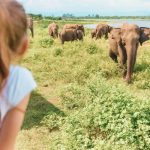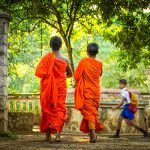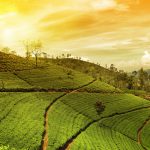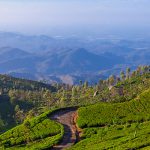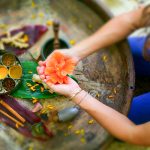Sri Lanka’s Monkey Kingdom
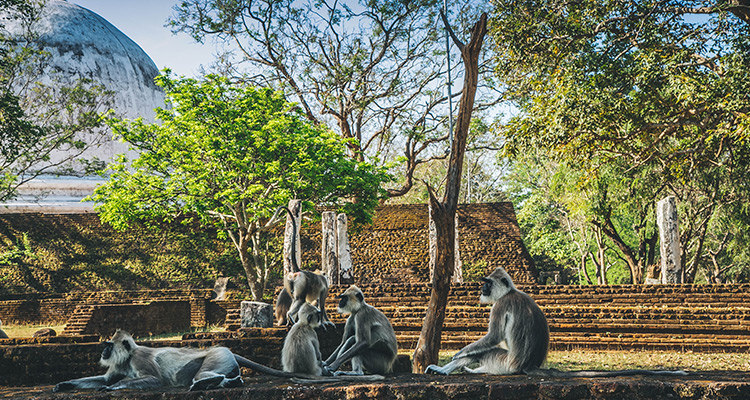
When it comes to wildlife, Sri Lanka really has it all; mass elephant gatherings in Minneriya National Park, blue whale migration off the coast of Mirissa, leopard spotting in Yala National Park, turtle breeding grounds along the south coast and rare tropical birds in Sinharaja Rainforest.
The island sports a huge diversity of flora and fauna where, even in the most built-up areas, the heartbeat of nature is never far away. Some of the most personable and intriguing creatures you may meet on your travels are Sri Lanka’s monkeys. These fascinating primates have long been a visitor favourite thanks to their inquisitive nature and oh-so-human behaviours.
To learn about how these monkeys interact with each other and their place within the ecology of the island, we highly recommend a visit to the Smithsonian Primate Research Centre. There you will have the opportunity to get up-close and personal with our tree-dwelling cousins.
Based at the ancient ruined city of Polonnaruwa, in Sri Lanka’s Cultural Triangle, the research centre is dedicated to the study of Sri Lanka’s primate species, including the three species of monkey — grey langur, toque macaque and purple-faced leaf monkey — as well as the two loris species, red and grey slender.
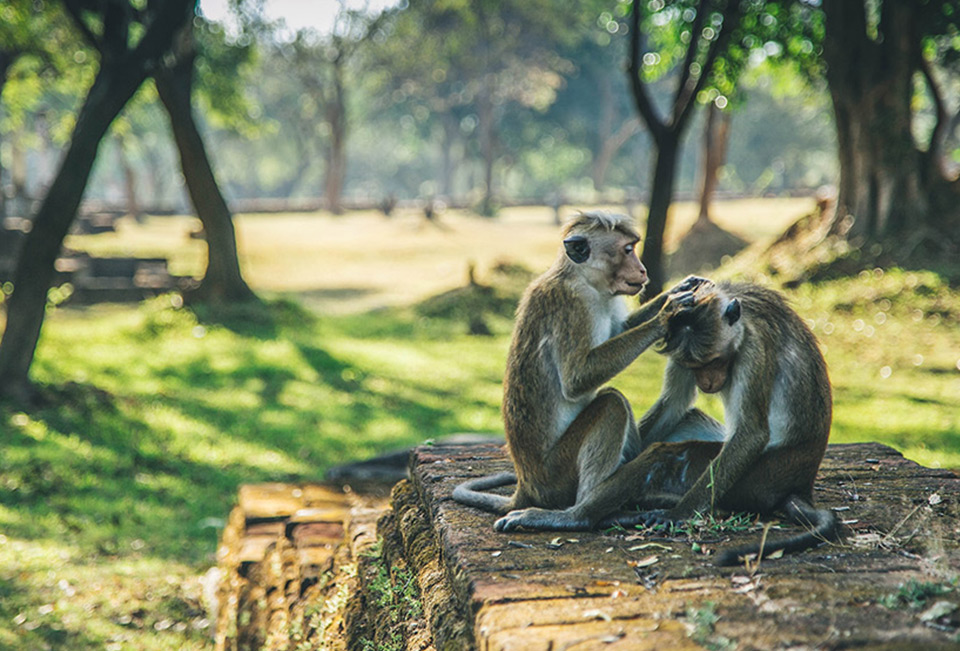
Conducting conservation and scientific research in the area for almost half a century, the centre offers a chance for visitors to engage and connect with Sri Lankan primates. Focused on three interrelated fronts — science, conservation and education — the centre’s mission is to “advance scientific knowledge for conserving wildlife and for a better understanding of the evolution of primate society and man’s place in nature”.
Visitors to the centre can join tours led by the primate experts around the atmospheric ruined city of Polonnaruwa, home to all three of the country’s monkey species. Once the ruling capital of the island, the surrounding forests have now reclaimed the city in scenes reminiscent of the Jungle Book. It’s this fantastical landscape that led to Disney filming their Monkey Kingdom documentary here:
With large numbers of monkeys from different family groups and species all living in close proximity to each other, Polonnaruwa is the ideal location to observe and record the complex interactions these animals are capable of. One of the most interesting aspects of the centre’s work is the study of parallel social behaviours seen in both monkeys and humans and how these behaviours evolve over time. The researchers hope that a better understanding of these interactions will result in a better understanding of how we, as humans, interact with each other.
During your time with the primate experts you will learn about monkey societies and their dynamics in the wild, how the different monkey species behave and co-exist peacefully in a shared forest habitat, how and why monkeys differ as individuals and issues of primate conservation. You will also gain a better understanding of your human place in nature.
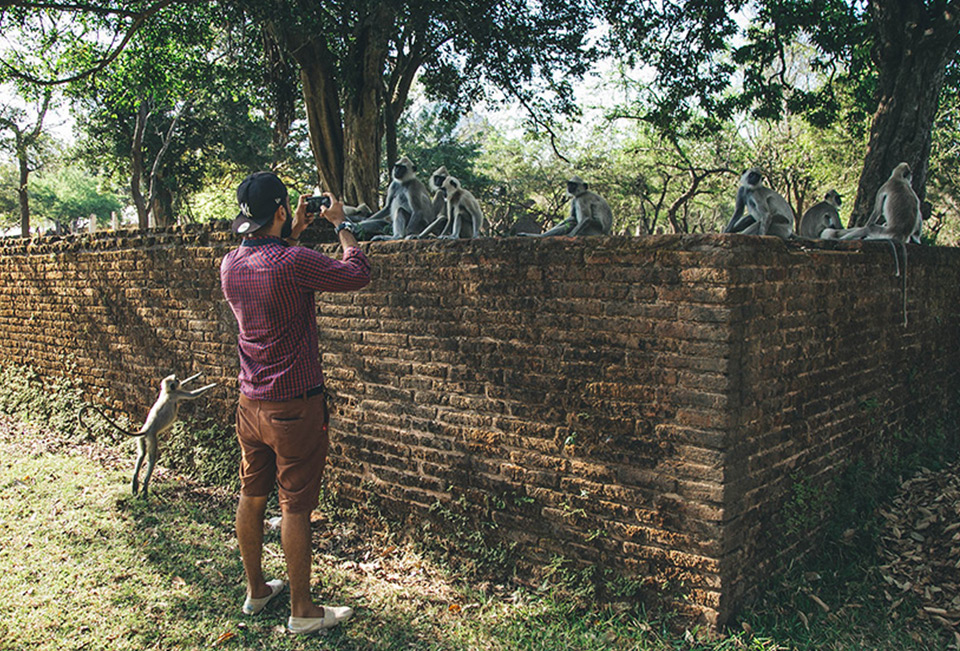
With growing environmental pressures placed on the various monkey species across the island, the researchers hope to educate visitors on the need to continue to protect these fascinating creatures and the habitats they thrive in.
The tours are child friendly and take place in early morning or late afternoon to avoid the heat of the day. Click HERE to experience the magic of the Monkey Kingdom for yourself.
If you would like to see more of Sri Lanka’s incredible nature, take a tour of the island’s wildlife hotspots with the expert guides of Red Dot Tours for an unmissable adventure of a lifetime. Click HERE for more information.
Sri Lanka Monkey Facts:
Toque macaques and purple-faced leaf monkeys are unique to Sri Lanka and found nowhere else in the world.
The toque macaques sport comical hairdos, similar to a “toque”, a hat popular in 16th century England, from which they take their name.
Grey langurs are also known as Holy Monkeys or the Hanuman Langur, after the Hindu god that bears their image. It is said that the black face, hands and feet of these monkeys are the result of Hanuman being burnt whilst setting fire to Sri Lanka in order to rescue Sita, the wife of Lord Rama.
Purple-faced leaf monkeys have special gut processes that allow them to digest mature leaves, meaning they rarely come to ground, spending their lives almost entirely in the tree-tops.

